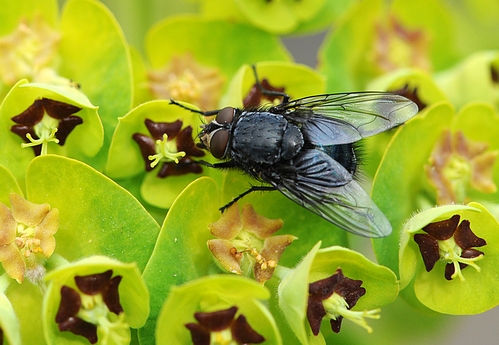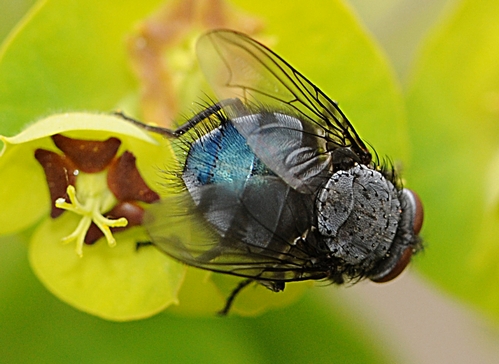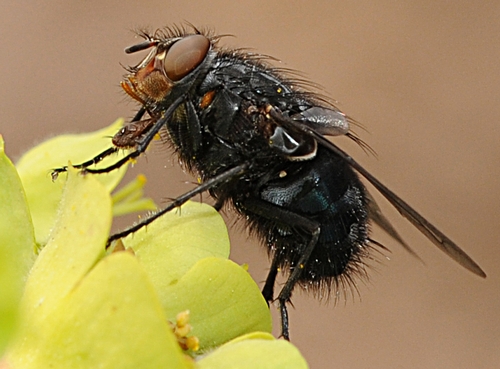Honey bees sip nectar from the Mediterranean spurge (Euphorbia characias wulfenii) planted in our bee friendly garden.
So do flies.
Last weekend several flies flashing colors as brilliant as those blue morpho butterflies landed on the evergreen shrub.
It wasn't your basic green bottle fly. No, indeed.
This fly was the European blue bottle fly, Calliphora vicinia, as identified by UC Davis forensic entomologist Robert Kimsey.
Check out the photos below showing the metallic blue-silvery coloration of the thorax and abdomen.
C. vicinia is known as a "colder-weather bottle fly," prevalent in early spring and fall when temperatures are relatively cool, about 55-75 Fahrenheit. It lays its eggs in dead bodies and sometimes inside infected wounds in healthy tissue. It's a fly species of significant forensic importance.
So here was this blue bottle fly on green blossoms.The fly was gathering some quick energy, a sugar high.
"Flies like nectar, too," said Lynn Kimsey, director of the Bohart Museum of Entomology on the UC Davis campus and professor and vice chair of the UC Davis Department of Entomology.
The museum houses some seven million specimens.
And that includes...drum roll...the European blue bottle fly.
Pinned.
Attached Images:

Blue on Green

Blue Abdomen

Sip of Nectar